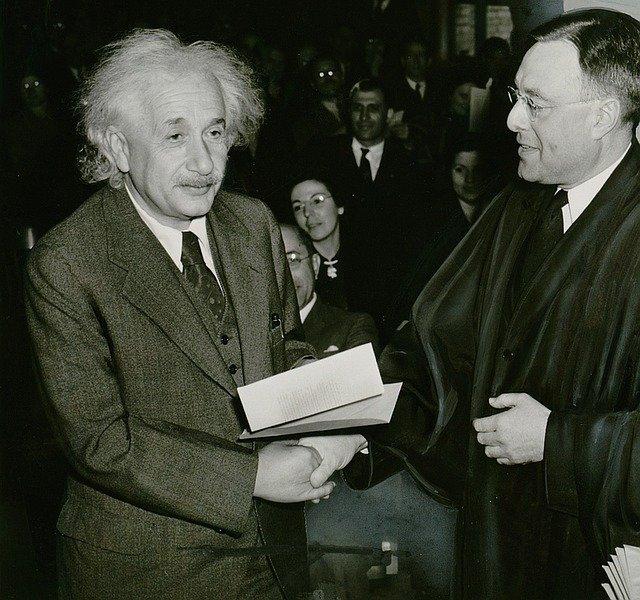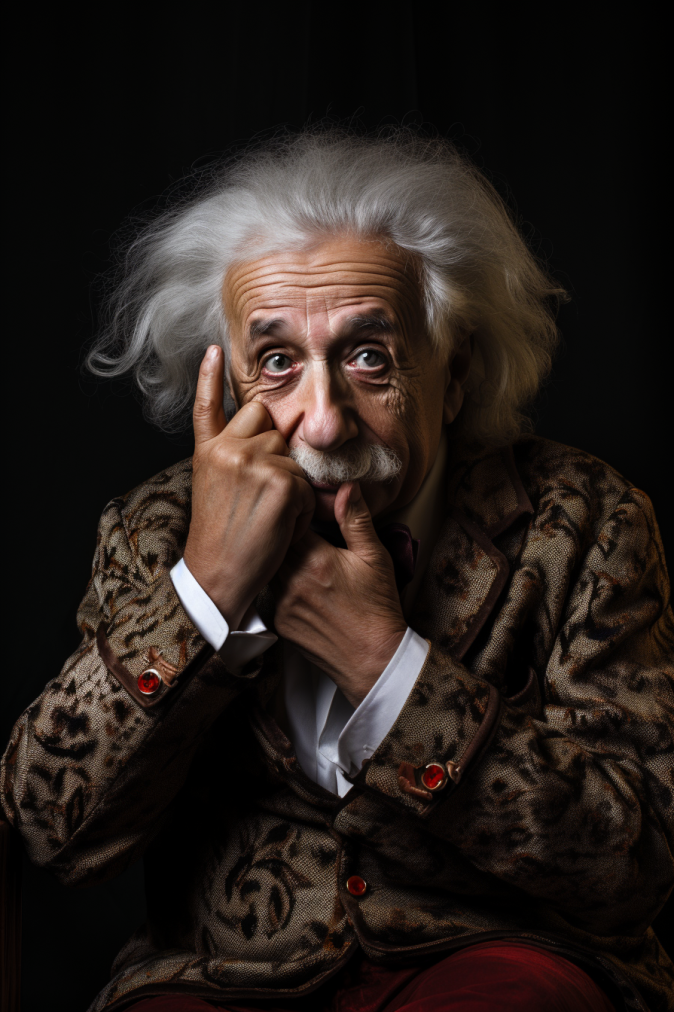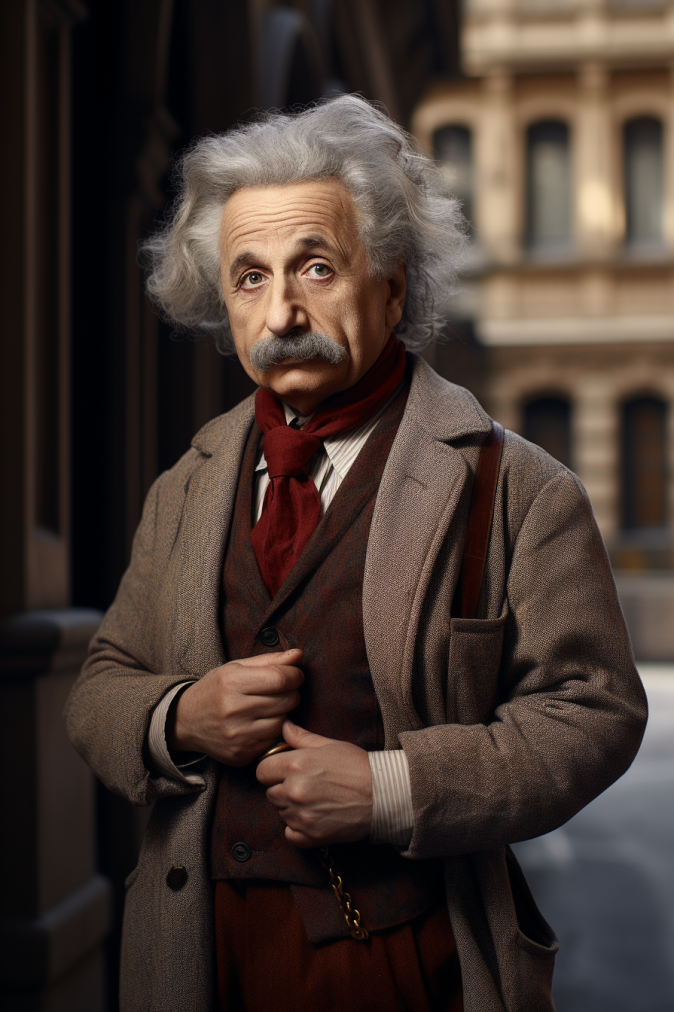
One of the most exceptional minds in history, Albert Einstein, was a German-born physicist and mathematician whose theories on relativity reshaped human understanding of time, space, matter, energy and gravity.
Subsequently impacting inventions such as atomic weaponry control, outer space exploration, and applications utilizing light.
Albert Einstein, despite his reputation as a strange individual, was the recipient of the Nobel Prize for Physics. It’s possible you’re unfamiliar with some of his theories and inventions, but they’re still in use today.
What did Albert Einstein invent?
Albert Einstein invented many inventions in physics that are still used today. Let’s take a look.
The Theory of Relativity
Albert Einstein’s theory of relativity is one of the most famous and influential theories in all of physics. It has two main principles: the principle of special relativity and the general theory of relativity.
The principle of special relativity is based on the fact that the laws of physics are the same for all observers in uniform motion. This principle has been proven by numerous experiments, and it is essential to our understanding of the universe.
The general theory of relativity is based on the fact that the force of gravity is the same as the acceleration caused by it.
This theory has also been proven by experiments, and it is essential to our understanding of the universe.
Both theories have had a profound impact on our understanding of time and space, and they are essential to our understanding of the universe.
Read also: Nikola Tesla’s Inventions List That Changed The World
The Photoelectric Effect
The photoelectric effect is the phenomenon in which electrons are emitted from a metal when it is exposed to light. This effect is the basis for modern solar energy technology.
When light shines on a metal surface, it can cause electrons to be emitted from the metal.
The photons of light must have enough energy to overcome the electron’s binding energy, or else the electron will not be emitted. This process can be used to generate electricity, as in photovoltaic cells.
Einstein’s work on the photoelectric effect was instrumental in the development of quantum Theory.
Quantum theory is the branch of physics that studies the behavior of matter and energy at the atomic and subatomic levels.
In his 1905 paper on the photoelectric effect, Einstein proposed that light consists of discrete packets of energy, which he called photons.
This discovery laid the foundation for quantum theory. Without Einstein’s work on the photoelectric effect, the quantum theory would not exist today.
The Brownian Motion
The Brownian motion is the random movement of particles suspended in a fluid. Einstein used the Brownian motion to provide evidence for the existence of atoms and molecules.
Einstein’s work on the Brownian motion was published in 1905, and it is considered to be one of his most important achievements.
His work showed that the Brownian motion is caused by the collisions of the particles with the molecules of the fluid. This evidence was instrumental in convincing many scientists of the reality of atoms and molecules.
The Brownian motion has since been studied extensively, and it continues to provide insights into the behavior of matter on a small scale. It is also a useful tool for detecting very small particles, such as viruses.
Read also: How Was Avogadro’s Number Determined
The Atomic Bomb
In 1939, Einstein wrote a letter to President Franklin Roosevelt warning him of the potential danger of nuclear weapons.
Although Einstein did not develop the atomic bomb himself, his work was essential to its development. Einstein’s work on the theory of relativity led to the development of the atomic bomb.
In particular, his research on the relationship between energy and matter showed that massive amounts of energy could be released by splitting atoms. T
his knowledge was used to develop the first atomic bombs, which were used in World War II.
After the war, Einstein spoke out against the use of nuclear weapons, arguing that their destructive power made them too dangerous to be used.
Today, the dangers of nuclear weapons are still very real, and Einstein’s work continues to be an important part of our understanding of these deadly weapons.

The quantum theory of light
In his later years, Einstein turned his attention to the quantum theory of light. This theory explains the behavior of light on a subatomic level.
In particular, it explains the photoelectric effect, which is the basis for modern solar energy technology.
Einstein’s work on the quantum theory of light was instrumental in the development of quantum mechanics. Quantum mechanics is the branch of physics that studies the behavior of matter and energy on a subatomic level.
In his 1905 paper on the photoelectric effect, Einstein proposed that light consists of discrete packets of energy, which he called photons.
This discovery laid the foundation for quantum mechanics. Without Einstein’s work on the photoelectric effect, quantum mechanics would not exist today.
Read also: How Many U.S. Presidents Have Been Assassinated
The Laser
Invented in the 1960s, lasers have revolutionized many industries thanks to their unique ability to emit a beam of coherent light. Lasers are now used in a wide range of applications, from surgery and communications to manufacturing.
The development of lasers was made possible by Einstein’s work on the photoelectric effect. This principle states that when light strikes a metal surface, electrons are emitted.
This discovery laid the foundation for the creation of lasers, which use mirrors to bounce light back and forth until it is concentrated into a powerful beam.
Today, lasers are an essential tool in many fields. They can be used for everything from cutting through metal to scanning groceries at the checkout counter.
Thanks to their versatility and precision, lasers have become an indispensable part of modern life.
What did Albert Einstein invent first?
Einstein’s first invention was the photoelectric cell, which he patented in 1904. The photoelectric cell was a device that could convert light into electricity.
This discovery laid the foundation for the development of solar energy. Einstein’s work on the photoelectric effect was also instrumental in the development of quantum theory.
Without Einstein’s work on the photoelectric effect, the quantum theory would not exist today.
Read also: How Did King Tut Die
History Behind Inventions

The Theory of Special Relativity
Albert Einstein unveiled his Theory of Special Relativity in 1905 through a paper titled “On the Electrodynamics of Moving Bodies.”
This groundbreaking theory challenged the prevailing Newtonian physics by asserting that the speed of light remains constant, and the laws of physics are consistent for all observers moving at a constant speed relative to each other.
Special relativity introduced the concept of spacetime, reshaping the understanding of the physical universe.
Theory of General Relativity
Einstein’s Theory of General Relativity, presented in 1915, departed from the traditional notion of gravity as a force between masses.
Instead, it proposed that mass or energy causes spacetime to curve.
This revolutionary hypothesis provided insights into the behavior of celestial bodies like planets and stars.
Subsequent observations, particularly during solar eclipses, substantiated the bending of starlight, validating the theory.
The Photoelectric Effect
In 1905, Einstein’s explanation of the photoelectric effect marked the first experimental evidence of energy quantization.
Departing from the prevalent wave theory, Einstein postulated that light consists of particles, later termed photons, transferring energy to electrons.
This conceptual shift laid the groundwork for the development of quantum mechanics, reshaping the understanding of light and energy interactions.
The Equation E=mc²
Einstein’s iconic equation, E=mc², emerged in a 1905 paper titled “Does the inertia of a body depend upon its energy content?”
This equation posits the equivalence of mass and energy, introducing profound implications for physics.
It underpins our understanding of energy release in nuclear reactions and forms the basis for nuclear power applications.
The Bose-Einstein Statistics
In 1924, Einstein contributed to the field of subatomic particles with a paper on the statistical behavior of bosons at low temperatures, now known as Bose-Einstein statistics.
This work laid the foundation for understanding the statistical properties of particles in this category, influencing subsequent developments in physics.
Einstein-Podolsky-Rosen Paradox
The Einstein-Podolsky-Rosen paradox, proposed in a 1935 paper, aimed to highlight the perceived incompleteness of quantum mechanics.
Collaborating with Boris Podolsky and Nathan Rosen, Einstein used this thought experiment to illustrate potential shortcomings in the prevailing quantum theory.
Advantages/Impacts of Inventions

Albert Einstein’s scientific breakthroughs and inventions have profoundly impacted our understanding of the universe, contributing to technological advancements across various fields.
Here are the key advantages and impacts of his inventions:
Theory of Special Relativity
- Advantages: Enhanced understanding of space and time, applied in particle physics and cosmology.
- Impact: Utilized in the development of particle accelerators, GPS, and navigation systems.
Theory of General Relativity
- Advantages: Improved comprehension of gravity and the universe’s structure.
- Impact: Applied in GPS, navigation systems, and prediction of celestial events like black holes.
The Photoelectric Effect
- Advantages: Led to the development of technologies like photocells used in automatic doors and cameras.
- Impact: Enhanced photoemission electron microscopy.
The Equation E=mc²
- Advantages: Enabled the harnessing of nuclear power for electricity production.
- Impact: Applied in particle physics, cosmology, and various scientific fields.
Bose-Einstein Statistics
- Advantages: Improved understanding of subatomic particle behavior.
- Impact: Applied in condensed matter physics and quantum information technology.
Einstein-Podolsky-Rosen Paradox
- Advantages: Advanced knowledge of quantum physics.
- Impact: Applied in quantum computers and quantum cryptography.
Einstein Refrigerator
- Advantages: Facilitated the development of more effective refrigeration systems.
- Impact: The thermodynamic cycle of the Einstein refrigerator is still used in numerous refrigeration systems.
Limitations of Inventions

Albert Einstein’s scientific contributions and inventions have undeniably transformed our understanding of the universe and propelled technological advancements.
While the positive impacts are substantial, it’s essential to acknowledge some associated drawbacks or limitations:
- Theory of General Relativity: Incompatibility with quantum mechanics, giving rise to the need for a new theory—quantum gravity—to reconcile the two.
- The Photoelectric Effect: Einstein’s theory is constrained to a specific frequency range, lacking an explanation for light behavior at higher frequencies.
- Equation E=mc²: Nuclear power generation based on Einstein’s equation poses risks of radioactive accidents and challenges in nuclear waste disposal.
- Bose-Einstein Statistics: Einstein’s research on bosons at low temperatures (Bose-Einstein statistics) is confined to specific temperature ranges, offering limited insights into boson behavior at higher temperatures.
- Einstein-Podolsky-Rosen Paradox: The thought experiment proposed by Einstein, Boris Podolsky, and Nathan Rosen cannot be directly tested, as it remains a conceptual exploration rather than a real-world experiment.
- Einstein Refrigerator: While more efficient than contemporary refrigerators, Einstein’s invention falls short of the efficiency achieved by modern refrigeration systems.
Conclusion
Albert Einstein was a brilliant physicist who made groundbreaking discoveries in the field of quantum mechanics.
His work on the photoelectric effect, the theory of relativity, and the quantum theory of light laid the foundation for many modern technologies.
Today, Einstein’s work continues to be an important part of our understanding of the universe. As we continue to explore the mysteries of the cosmos, Einstein’s theories will no doubt continue to provide us with valuable insights.
I believe that Einstein’s legacy will continue to inspire and enlighten us for generations to come. Thank you.



